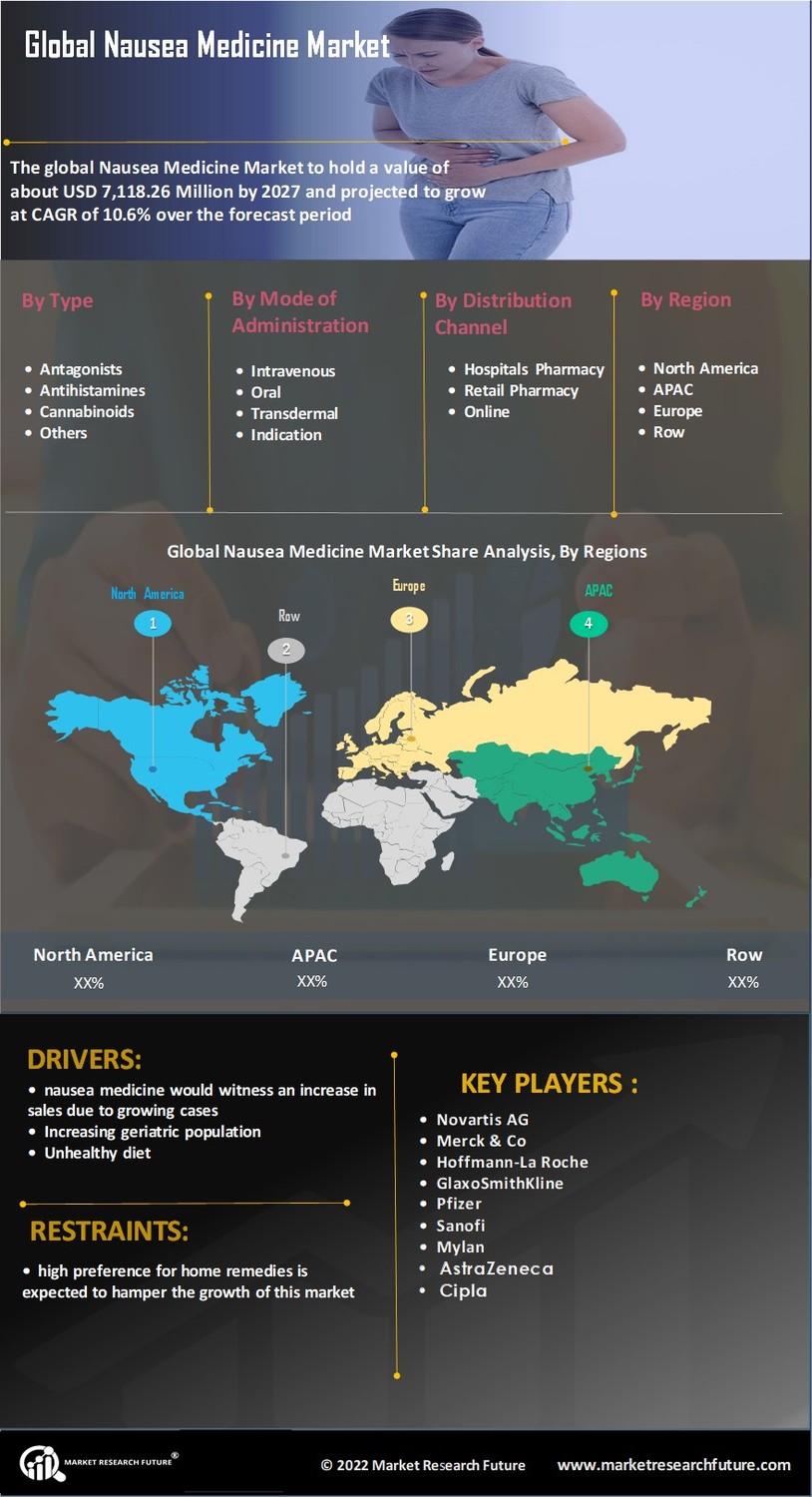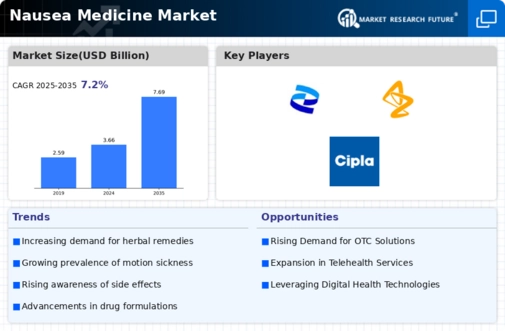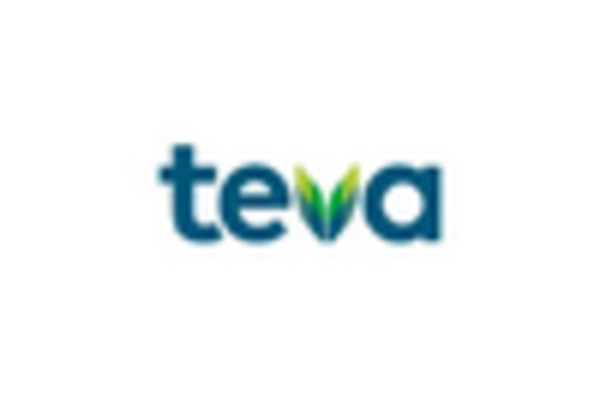Expansion of E-commerce Platforms
The expansion of e-commerce platforms is transforming the way consumers access nausea medications, thereby impacting the Nausea Medicine Market. With the rise of online pharmacies and health-focused e-commerce sites, consumers now have greater access to a variety of nausea relief products. This trend is particularly relevant in regions where traditional pharmacies may be limited. The convenience of online shopping, coupled with the ability to compare prices and read reviews, is likely to drive sales in the nausea medicine sector. As e-commerce continues to grow, it may contribute to a significant increase in market penetration for nausea medications.
Rising Awareness of Nausea Management
There is a growing awareness regarding the importance of effective nausea management among healthcare professionals and patients alike, which is likely to propel the Nausea Medicine Market. Educational initiatives and campaigns aimed at informing the public about the various causes and treatments for nausea have contributed to this trend. As patients become more informed about their options, they are more inclined to seek medical advice and appropriate treatments. This increased awareness may lead to a higher demand for both prescription and over-the-counter nausea medications, thereby expanding the market further.
Advancements in Pharmaceutical Research
Recent advancements in pharmaceutical research and development are significantly influencing the Nausea Medicine Market. The introduction of novel drug formulations and delivery systems, such as transdermal patches and sublingual tablets, has enhanced the efficacy and convenience of nausea treatments. Furthermore, the market has witnessed a surge in clinical trials aimed at discovering new antiemetic agents, which could potentially offer improved outcomes for patients. As a result, the industry is expected to experience growth driven by these innovations, with a projected increase in market value reaching several billion dollars in the coming years.
Increased Focus on Preventive Healthcare
The increasing focus on preventive healthcare is emerging as a notable driver for the Nausea Medicine Market. As healthcare systems worldwide shift towards preventive measures, there is a growing emphasis on managing symptoms before they escalate into more severe conditions. This proactive approach encourages individuals to seek out nausea medications as a means of prevention, particularly in high-risk populations such as pregnant women and patients undergoing certain medical treatments. Consequently, this trend may lead to a sustained increase in demand for nausea medicines, as healthcare providers advocate for early intervention strategies.
Growing Incidence of Nausea-Related Conditions
The rising prevalence of nausea-related conditions, such as motion sickness, chemotherapy-induced nausea, and pregnancy-related nausea, appears to be a primary driver for the Nausea Medicine Market. According to recent estimates, approximately 30% of the population experiences motion sickness at some point in their lives. Additionally, the increasing number of cancer patients undergoing chemotherapy has led to a heightened demand for effective antiemetic medications. This trend suggests that as more individuals seek relief from nausea, the market for nausea medicines will likely expand, with pharmaceutical companies focusing on developing innovative solutions to address these conditions.

















Leave a Comment